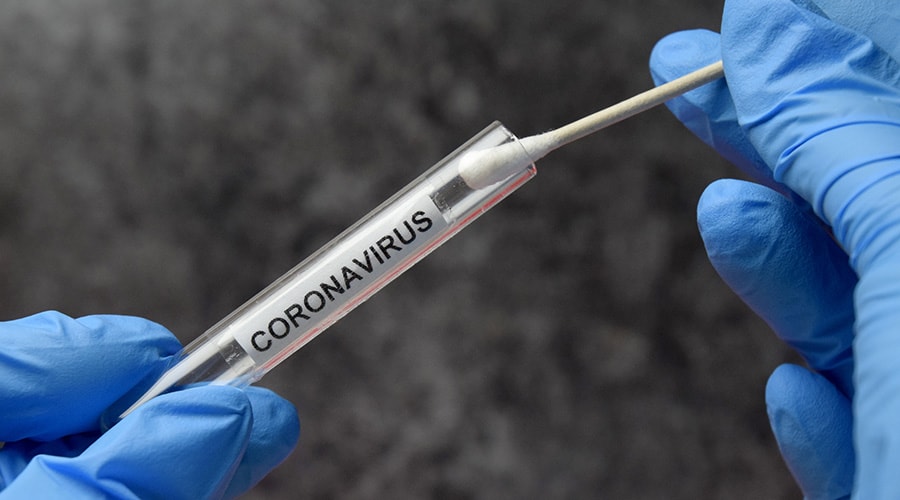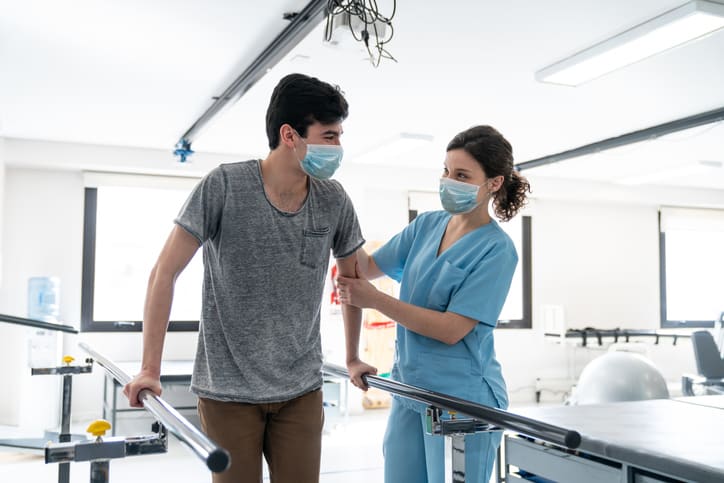
Your Coronavirus update for April 29; join Elite weekly to stay informed
More than 3 million cases of coronavirus (COVID-19) have been diagnosed worldwide as of Monday evening, including more than 208,000 deaths. Healthcare officials in the United States have reported nearly 970,000 positive COVID-19 patients and more than 55,000 deaths.
CMS Offers Toolkit To Assist Workforce Challenges
Healthcare decision-makers at the state and local levels are expected to better utilize their workforces when confronting the novel coronavirus (COVID-19) through a new toolkit developed by the Centers for Medicare & Medicaid Services (CMS) and the Assistant Secretary of Preparedness and Response (ASPR). According to CMS and ASPR officials, the COVID-19 Healthcare Workforce Toolkit1 includes a full suite of available resources to maximize responsiveness based on state and local needs. The resource has been developed by the Healthcare Resilience Task Force as part of the government’s response to COVID-19.
“The Administration has taken swift and unprecedented emergency action to lift regulatory constraints, ease federal rules, and approve waivers that help local hospitals, clinics, and other healthcare facilities boost their frontline medical staffs and increase their ability to care of patients in the face of crisis,” said CMS administrator Seema Verma in a prepared statement to the media recently. “This new resource will help states apply all of these important changes on the ground in order to maximize their workforce to ensure care for patients.”
The country’s healthcare system has been granted flexibility in response to the pandemic, including a bolstering of the workforce and easing of barriers for hiring and retaining physicians, nurses, and other professionals in an effort to support higher staffing levels. Medical practitioners are now able to practice at the top of their license and across state lines, which officials said is offering more flexibility for rural providers and expanding the available workforce. CMS has also allowed additional healthcare providers to enroll in Medicare temporarily to provide care during this public health emergency. An unprecedented expansion of tele-health services covered by Medicare has also allowed more patients to receive visits at home to help reduce potential exposure to the virus.
Officials say the toolkit builds on the steps CMS has taken to ensure healthcare facilities across the nation are fully staffed and equipped to treat COVID-19 patients as efficiently as possible. The resource provides information on funding flexibilities, liability protections, and workforce training. For example, communities can view how and where workforce waivers can be applied based on information from other areas.
The toolkit also provides best practices on what has been implemented in the field. An online assistance center, information exchange of case studies, and additional peer-to-peer communications are also available.
HHS Announces CARES Act Funding To Support COVID-19 Response
Additional resources to state and local jurisdictions in support of healthcare’s response to the 2019 novel coronavirus (COVID-19) have recently been announced by officials with the U.S. Department of Health & Human Services (HHS) and the Centers for Disease Control and Prevention (CDC).
Using funds from the Coronavirus Aid, Relief, and Economic Security (CARES) Act of 2020, the CDC is awarding $631 million to 64 jurisdictions through the existing Epidemiology and Laboratory Capacity for Prevention and Control of Emerging Infectious Diseases cooperative agreement. These funds, along with the previous support the CDC has provided, is expected to assist states with efforts to “re-open” the country. The new funding will help public health departments across the United States to continue strategies against COVID-19 and expand capacity for testing, contact tracing, and containment, according to Alex Azar, HHS secretary. “The professionals who staff America’s state, local, tribal, and territorial public health departments have played a vital role in protecting Americans throughout the COVID-19 pandemic, by reporting and analyzing surveillance data, tracing the spread of the virus, and developing scientific guidelines appropriate for local communities,” said Azar. “As we look toward re-opening the economy, the work of these dedicated public health officials is only going to get more important.”
The additional funding into the nation’s public health infrastructure will strengthen capacity to implement containment measures, according to Robert R. Redfield, MD, director of the CDC. “The ability to implement aggressive contact tracing, surveillance, and testing will be fundamental to protecting vulnerable populations as the nation takes steps to reopen and Americans begin returning to their daily lives,” Redfield said.
The CDC will reportedly utilize existing networks to contact state and local jurisdictions to access funding, which may be used for activities including:
- Establishing or enhancing the ability to aggressively identify cases, conduct contact tracing and follow up, and implement appropriate containment measures.
- Improving morbidity and mortality surveillance.
- Enhancing testing capacity.
- Controlling COVID-19 in high-risk settings and protecting vulnerable or high-risk populations.
- Working with healthcare systems to manage and monitor system capacity.
A listing of the funding jurisdictions, including past COVID-19 related funding from CDC, is available online through HHS.2
ANNA Launches Tool to Send Nurses To “Hotspots”
A spike in kidney-related patient care has created an unexpected and dire need for nephrology nurses on the frontlines of the coronavirus (COVID-19) pandemic, according to officials with the American Nephrology Nurses Association (ANNA). In response, ANNA has launched a “COVID-19 Nephrology Nurse Surge Support” interactive map online that identifies “hotspots” across the country where need is most abundant. The map, which identifies the hardest hit states, also allows hospitals, facilities, and other organizations to submit information about their current needs for nephrology nursing staff.
“The tool works both ways: Nurses search the map by state to quickly identify and contact facilities with openings, and facilities also use the map to provide their name, location, type of healthcare professionals, and specific practice areas they need to fill,” said Lillian Pryor, MSN, RN, CNN, president of ANNA.
ANNA officials say the tool was devised specifically due to states and organizations requesting assistance in recruiting nephrology nurses with life-threatening kidney complications from COVID-19 increasingly being reported and thus creating a nationwide emergency. Recent estimates released by Kidney International showed 34-63 percent of COVID-19 patients experience some form of kidney involvement upon admission. Other studies have indicated 20-40 percent of patients progress to develop kidney failure.
“The New York State Department of Health contacted us, as well as many other kidney and healthcare organizations, asking if ANNA could help recruit nephrology nurses and advanced practice registered nurses (APRNs) for the hotspots,” Pryor said. “We knew we needed to quickly come up with a way to address this need for facilities facing a shortage of frontline providers.”
The Surge Support map highlights in red the states with the most critical need for nurses, APRNs, and patient care technicians (PCTs) with expertise in caring for patients with kidney failure, including dialysis. Some facilities are also offering to educate and train nurses and technicians without experience.
“The surge tool is designed to match any facility in need with available kidney healthcare providers,” said Tamara Kear, PhD, RN, CNN, FAAN, ANNA’s executive director. “This has been a top-priority project for ANNA, and we are collaborating across the kidney community to meet the current demand. We’re continuously updating the map and disseminating information throughout the healthcare industry.”
A broad network of nephrology nurses, experts, organizations, and leaders collaborated to make the surge tool as effective as possible, according to Kear. ANNA officials also said they have been given “tremendous support from the New York State Department of Health throughout the process. Dialysis providers, hospitals, health systems, departments of health, COVID-19 surge centers, and other entities in need of nephrology nurses, APRNs, or PCTs, are invited to use the tool and spread the word about its availability. “Patients with kidney failure need nurses with nephrology training, and dialysis requires high-level skills and knowledge,” Kear said. “Once onsite, nephrology nurses can also augment the skills of critical care nurses managing kidney replacement therapies in critical care units.”
ANNA is not coordinating placement of nurses and technicians, but is serving as the conduit to make the connections. According to Pryor, ANNA has compiled and posted a list of resources, such as travel packages, to further help the nurses and facilities using the tool.
“These resources include hotels and airlines offering free or discounted offers to healthcare workers providing frontline care,” Pryor said. She encourages nurses and facilities to repeatedly check for updates, links, and additional information.
Thank you for reading your Coronavirus Update for April 29: a part of our weekly article series designed to give you all the information you need on the COVID-19 pandemic. If you missed last week’s article, you can read it here.
References
1. COVID-19 Workforce Virtual Toolkit: Resources for Healthcare Decision-Makers Responding to COVID-19 Workforce Concerns. HHS. 2020. Accessed online: https://asprtracie.hhs.gov/Workforce-Virtual-Toolkit
- CDC Coronavirus Funding to Jurisdictions. CDC. 2020. Accessed online:
www.hhs.gov/about/news/2020/04/23/updated-cdc-funding-information.html






